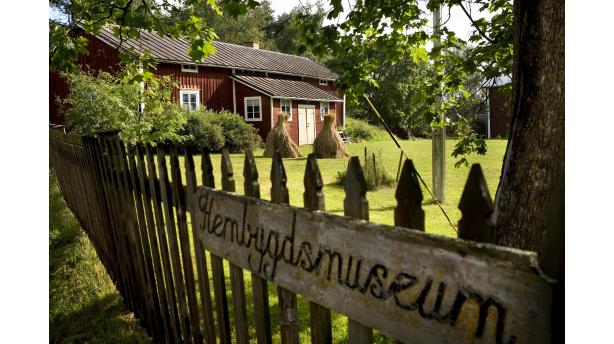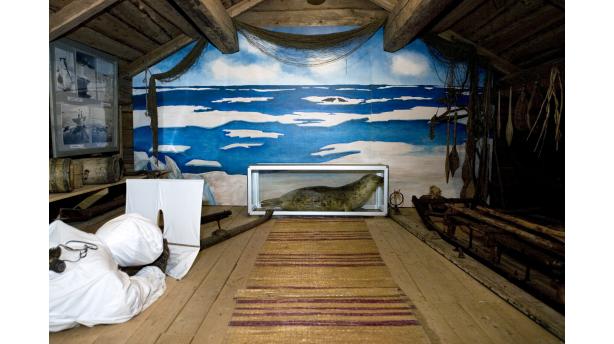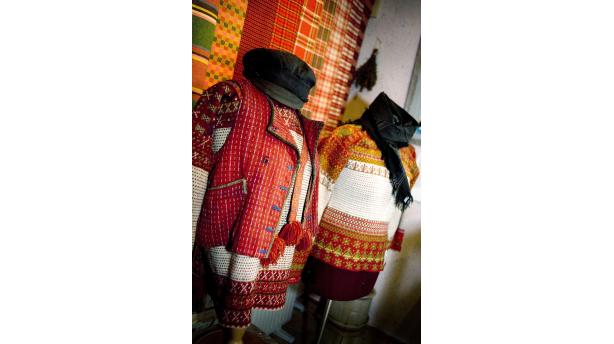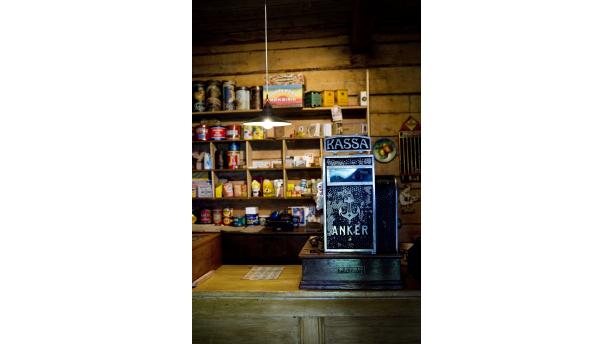An essential colour in the Korsnäs sweater is red. Other possible colours are green, yellow, orange and sometimes even blue and pink. The woven suspenders and church reins were abundantly and colourfully decorated, too.
Museum A-Ö » Rural life and craft » Korsnäs Museum
Korsnäs Museum




Did you know...
An essential colour in the Korsnäs sweater is red. Other possible colours are green, yellow, orange and sometimes even blue and pink. The woven suspenders and church reins were abundantly and ...
The colourful Korsnäs sweaters have an obvious part in the extensive textile collection of the Korsnäs Museum. The museum is the oldest one in the region and consists of a peasant cabin, a loft building with a village shop and a small herbal garden. Besides the colourful textiles the visitor can get acquainted with everyday chores and toils.
One of the chambers of the peasant cabin is called the Bridal Chamber, because an old time wedding is being represented there. Displayed in the chamber is a beautiful restored wedding dress, which is a very exact imitation of the wedding dress of one Maria Gustava Rofhök. The groom is also dressed in a formal dark suit with colourful details, such as a paper flower in the lapel of his coat. The bride’s most important embellishment was the brass or gilded bridal crown. It was attached to the bride’s bun shaper inside the high faux brass crown. The wedding dress and the brass crown were richly decorated with pearls, small mirrors, beautiful baubles and ornaments.The museum has an extensive collection of bedlinens and various garments. The skirts, vests and scarves demonstrate the colour spectrum typical for Korsnäs handcrafts. On display are both the Korsnäs regional costume and the Korsnäs sweater, and in the vestibule attic are on view tools and instruments, that were used for making yarn and weaving fabrics. In the 19th century it was customary that the wife-to-be made a sweater for her husband-to-be. The bride made the sweater together with her friends, one of whom was specialized in making a patterned flounce.
In the attic of the cabin is an exhibition illustrating seal hunting, and in the vitrine is displayed a genuine seal, a bullet gun and other tools and equipment, that were essential in seal hunting. Seal hunting used to be an important source of livelihood on the coast. Men needed plenty of supplies in order to be able to reside on the ice during the seal hunt that could linger for up to 3 or 4 months. One of the oldest items in the museum is a wooden cup dating back to 1798.
On the area can be found a windmill, a grain magazine, a small rose garden and a spice, herb and vegetable garden, with for instance wormwood, marshmallow, lovage and southernwood. Next to the area is a short hiking track of 1 km. Inside the loft building has been furnished a 1950s room, and there are also handcraft tools, a carriage shed, a maid’s chamber and a village shop in the loft. The interior of the village shop originates from the old village shop of J.L. Söderlund and on display are mainly products from the wartime. In the loft can also be seen a hand held planer from the year 1860 and the first tractor on the district.
The beautiful courtyard milieu also functions as a venue for celebrations and handwork presentations, where one can learn for example how a Korsnäs sweater is made in a unique way by three women. Other events are among others a story-telling evening for the grown-ups.



